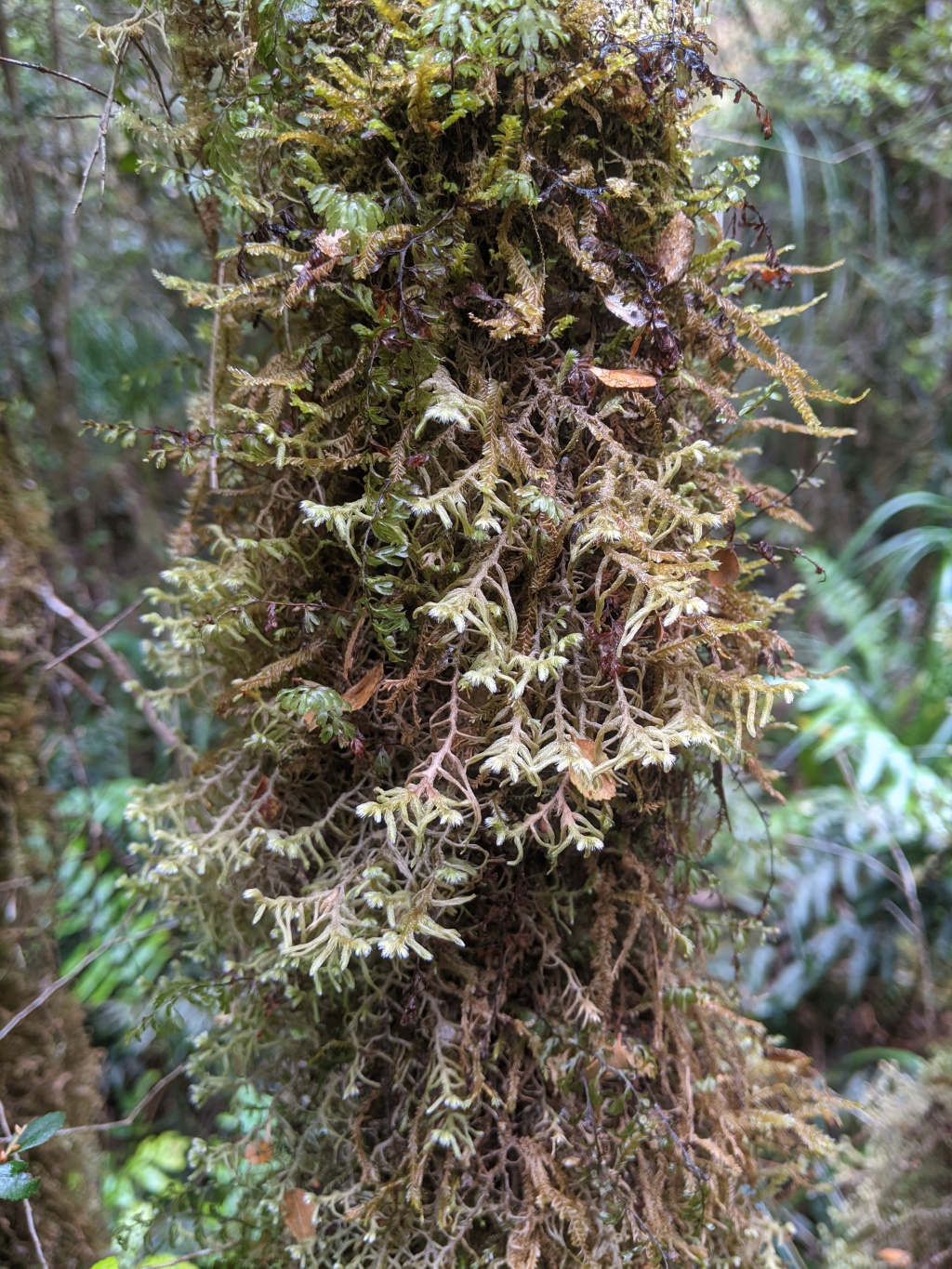Lepicoleaceae
Epiphytic, lithophytic or terrestrial, dioicous or monoecious (not in Victoria). Asexual reproduction rarely by fragmenting of leaf lobes (not in Victoria). Stems regularly pinnately or bipinnately branched or irregularly (not in Victoria) branched, with two ranks of lateral leaves and a single rank of underleaves, sometimes with paraphyllia (not in Victoria); branches emerging from main stem near a lateral leaf with reduced number of lobes and without a ring of tissue or ring of small leaf like appendages at base, rarely (not in Victoria) branches emerging from unmodified lateral leaves and underleaves and with a ring of tissue at its base; paraphyllia (not in Victoria) branched or unbranched, filamentous. Lateral leaves transverse to incubous, usually 4-lobed on stem, with central cleft often deepest, sometimes 3- (not in Victoria) or 5-lobed on stem, 2–4-lobed on branches, contiguous (not in Victoria) or imbricate, entire or ciliate basal to lobes; lobes narrowly triangular, entire or ciliate (not in Victoria), with acute (not in Victoria) or attenuate hair-like apices. Underleaves similar in form to lateral leaves, similar in size or slightly smaller than lateral leaves. Leaf cells circular or quadrate to elliptic or irregular, often becoming longer and rectangular toward basal centre and in cilia, smooth or striolate, thick-walled without trigones (not in Victoria) or with confluent trigones, with one (not in Victoria) or numerous spherical, ellipsoid or fusiform smooth to finely granular or segmented (not in Victoria) oil bodies. Rhizoids rare, in fascicles from underleaf base or from near apices of flagelliform branches, without internal peg-like thickenings, hyaline. Androecia on primary branches often near branch bases, with bracteolar antheridia, with 4–numerous bracts, each bearing 1–2 antheridia. Sporophyte terminating main stem or primary branch, enclosed by a fleshy clavate or obovate coelocaule and bracts; perianth absent. Capsule globose, 5–6-stratose, dehiscing by 4 valves that may split secondarily, becoming elevated well above coelocaule; elaters present, uni- or bispiral. Spores spherical to ellipsoid, spinose, shed singly.
Two genera, one, Lepicolea Dumort. with ten species shared between Sri Lanka, south-east Asia, Japan, Taiwan, Malesia, South Africa, western South America north to south Mexico, Juan Fernandez, Fiji, Tahiti, New Zealand and its subantarctic islands, and south-east Australia, and the other Vetaforma Fulf. & Tayl. with one species from southern South America (Schuster 2000; Söderström et al. 2016); one species, Lepicolea scolopendra (Hook.) Dumort., in Victoria.
Schuster, R.M. (2000). Austral Hepaticae Part I. Nova Hedwigia Beiheft 118. Cramer in der Gebrüder Borntraeger Verlagsbuchbehandlung: Berling & Stuttgart.
Söderström, L., Hagborg, A., von Konrat, M., Bartholomew-Began, S., Bell, D., Briscoe, L., Brown, E., Cargill, D.C., Costa, D.P., Crandall-Stotler, B.J., Cooper, E.D., Dauphin, G., Engel, J.J., Feldberg, K., Glenny, D., Gradstein, S.R., He, X., Heinrichs, J., Hentschel, J., Ilkiu-Borges, A.L., Katagiri, T., Konstantinova, N.A., Larraín, J., Long, D.G., Nebel, M., Pócs, T., Puche, F., Reiner-Drehwald, E., Renner, M.A.M., Sass-Gyarmati, A., Schäfer-Verwimp, A., Moragues, J.S., Stotler, R.E., Sukkharak, P., Thiers, B.M., Uribe, J., Váňa, J., Villarreal, J.C., Wigginton, M., Zhang, L. & Zhu, R. (2016). World checklist of hornworts and liverworts. Phytokeys 59: 1–828.
 Spinning
Spinning